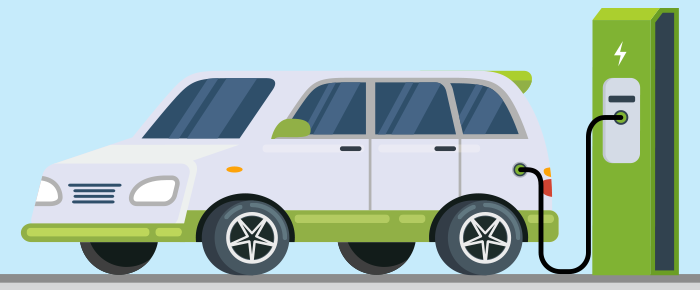Grant energizes California’s move toward ZEV future

Caltrans graphic
With 43,000 (and counting!) public charging points, the state continues to lead the nation in a greener direction
Drivers in California are starting to see the outlines of a more-resilient charging network that will power the next generation of vehicles.
California leads the country with more than 43,000 public charging ports. That is the most of any state in the country but won’t be nearly enough for coming patterns of vehicle adoption.
Twenty-five percent of new passenger vehicles sold in California last year through September were zero-emission vehicles. As California moves to phase out new gas-powered vehicles by 2035, that percentage will continue to rise, so the state is moving to invest in infrastructure that supports these vehicles and the climate benefits they bring.
In January, California won a major grant from the U.S. Department of Transportation (USDOT) to fix and install more than 1,000 chargers at more than 300 sites statewide. The Electric Vehicle Charger Reliability and Accessibility Accelerator (EVC RAA) program is the latest in a series of recent efforts to plan, install and maintain California’s chargers.
Let’s dive deeper into the EVC RAA program and the additional grants and programs that are funding our new network of chargers for zero-emission vehicles.

Caltrans graphic
Electric Vehicle Charger Reliability and Accessibility Accelerator (EVC RAA) program: The $63.7 million from the federal EVC RAA grant program – part of the Infrastructure Investment and Jobs Act, also known as the Bipartisan Infrastructure Law – will replace broken charging stations and install additional chargers to meet new federal standards for public charging infrastructure.
The grant has a pre-determined list of eligible chargers maintained by the Department of Energy’s Alternative Fuels Data Center. For the statewide application, Caltrans worked with EV charging providers to develop a list of chargers that are feasible to fix and upgrade to national charging standards within the program timeline and budget. The funding will support the replacement of both Level 2 and DC fast chargers. Caltrans is partnering with the California Energy Commission to implement this funding, building on the agencies’ partnership to deliver the NEVI Formula Program.
Thanks to the Bipartisan Infrastructure Law, California will receive nearly $64 million to improve EV charging stations across the state,” said Senator Alex Padilla. “Accelerating the adoption of an electric vehicle powered future requires a strong, reliable, accessible charging network across the state.
National Electric Vehicle Charging Infrastructure (NEVI) Formula Program
NEVI is a $5 billion program under the Bipartisan Infrastructure Law that aims to install a nationwide, interconnected network of DC fast chargers along the federally designated Alternative Fuel Corridors, which will cover both state and federal highways.
California’s share is approximately $384 million, which will be deployed across five years and overseen by Caltrans in partnership with the California Energy Commission, which leads the program’s implementation. NEVI funding in California will double the number of fast-charging sites along designated corridors today.
California’s first investment of $40.5 million in NEVI funding aims to install 270 electric vehicle (EV) fast chargers at 26 sites across the state. Applications for this funding opened last October and proposed awards were announced this spring.
Each NEVI-funded fast charging station will have a minimum of four 150 kW ports with Combined Charging System (CCS) connectors and a minimum total station power of 600 kW. Stations will be located no more than 50 miles apart along freeways and highways and no more than 1 mile from a freeway exit or highway roadway. Chargers funded under the NEVI and EVC RAA programs must achieve 97 percent uptime over the first five years of operation.
Sources: Jimmy O'Dea, assistant deputy director of transportation electrification in the Director’s Office of Sustainability; Shum Preston, Headquarters Public Affairs information officer

